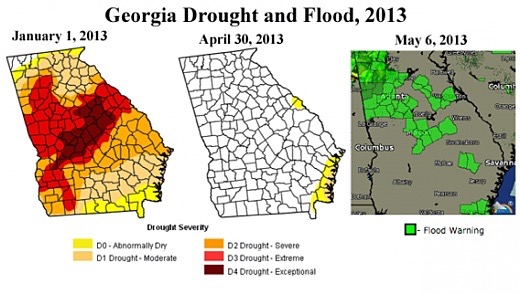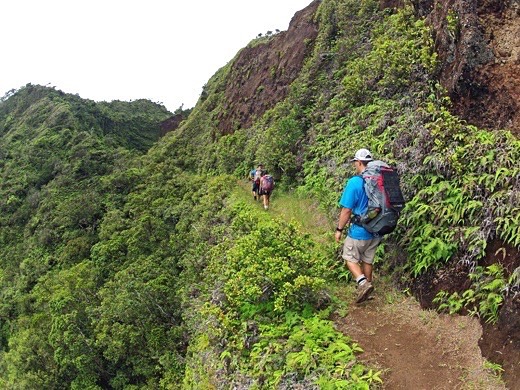SUBHEAD: An interview with James Howard Kunstler on the nature of our unraveling future.
Interview by Erico Tavares on 30 March 2017 for LinkedIn -
(https://www.linkedin.com/pulse/big-contraction-interview-james-howard-kunstler-erico-matias-tavares)

Image above: Family "camping out" of their 1958 Chevy Brookwood station wagon. Back when the car was new they were not "homeless", they were just "roughing it". From (http://www.ultraswank.net/advertising/classic-hand-drawn-car-ads-from-the-us/).
E Tavares: Thank you for being with us today. You have been writing about worsening societal issues, what you call “entropy in action”, for many years. Broadly speaking, why do you think the US is in so much trouble?
JH Kunstler: We’ve been sowing the seeds for our predicament since the end of World War II. You might even call this process “The Victory Disease.” In practical terms it represents sets of poor decisions with accelerating bad consequences.
For instance, the collective decision to suburbanize the nation. This was not a conspiracy. It was consistent with my new theory of history, which is Things happen because they seem like a good idea at the time.
In 1952 we had plenty of oil and the ability to make a lot of cars, which were fun, fun, fun! And we turned our war production expertise into the mass production of single family houses built on cheap land outside the cities. But the result now is that we’re stuck in a living arrangement with no future, the greatest misallocation of resources in the history of the world.
Another bad choice was to offshore most of our industry. Seemed like a good idea at the time; now you have a citizenry broadly impoverished, immiserated, and politically inflamed.
Of course, one must also consider the possibility that industrial society was a historic interlude with a beginning, middle, and end, and that we are closer to the end of the story than the middle.
It was, after all, a pure product of the fossil fuel bonanza, which is also coming to an end (with no plausible replacement in view.) I don’t view all this as the end of the world, or of civilization, per se, but we’re certainly in for a big re-set of the terms for remaining civilized.
I’ve tried to outline where this is all going in my four-book series of the “World Made By Hand” novels, set in the near future. If we’re lucky, we can fall back to sets of less complex social and economic arrangements, but it’s unclear whether we will land back in something like the mid-nineteenth century, or go full-bore medieval, or worse. One thing we can be sure of: the situation we face is one of comprehensive discontinuity — a lot of things just stop, beginning with financial arrangements and long-distance supply lines of resources and finished goods.
Then it depends whether we can respond by reorganizing life locally in this nation at a finer scale — if it even remains a unified nation. Anyway, implicit in this kind of discontinuity is the possibility for disorder. We don’t know how that will go, and how we come through it depends on the degree of disorder.
ET: Fair points, but one remarkable feature of Western civilization has been its resilience. In less than a decade the US has been able not only to reverse the historical decline in domestic crude oil production but also come up with natural gas as an expansive new source of energy. It now exports both of these commodities. Ditto for food production, where it can afford the luxury of using 40% of its corn production as car fuel. Doesn’t all this contradict what you had postulated in “The Long Emergency” back in 2005?
JHK: We flatter ourselves a bit to harp on our “resilience.” More realistically, history is an emergent process and societies are emergent phenomena which necessarily respond to the circumstances that reality presents. Sh*t happens and sh*t unhappens and then re-happens differently. The oil situation is grossly misunderstood by the public, including you, as implicit in the question you have just put to me.
We are not exporting any meaningful quantities of oil or natural gas. In fact we’re still importing nearly 8 million barrels of oil a day.
The shale oil “miracle” has largely been a manifestation of low interest lending into an industry that can’t pay back its loans, even as it produces like mad at a loss. You can look at it as a simple equation: oil over $75 a barrel crushes economies and oil under $75 a barrel crushes oil companies. To date, American oil companies have not made a red cent off the shale oil “miracle.”
It seemed like a good idea at the time, and it kept a lot of people busy for a while, but it was essentially a stunt that is not paying for itself and it has a short horizon. The public only sees lower gasoline prices at the pump; they have no idea how low prices are wrecking the oil industry. The result of all this will be an incrementally smaller global oil industry and fewer customers for its products — without anything to replace it.
The crux of the matter is the falling Energy Return on Investment (EROI). In the 1950s you got 100 barrels of Texas crude for every equivalent barrel of energy you sunk into the project. That’s 100 to 1. Shale oil gives you about 5 to 1.
Tar sands are a little worse. The worldwide average EROI these days is 17 to 1 (including Arabian oil, deep water, etc.). We can’t run all the systems of our “advanced” society at those ratios, and that is why we have been running up the debt so dramatically — borrowing from the future to cover the cost of living as we do.
And that is exactly why we are heading into financial clusterfuck as it becomes increasingly evident that the debt will never be paid back. This will wreck the banking system, and that will force everything else to change, including the dynamic of how we produce and distribute food. So, no, none of what I am saying here contradicts my 2005 book, “The Long Emergency”, though it has played out with some strange twists in the story.

Image above: A 1958 Chevy Brookwood station wagon as it appears today. With that big cargo bay and isolated location it could easily be used by homeless persons roughing it. From (http://usedfromusa.com/chevrolet-ads/145244-1958-chevrolet-brookwood-station-wagon.html).
ET: Another theme you talked about in that book is that in order to cope with looming energy and food crises Americans would have to eventually live in smaller-scale, localized and semi-agrarian communities. All part of a process you call the Big Contraction.
However, a McKinsey Global Institute research paper from 2012 predicts quite the opposite for most of the world in the coming years, as depicted in the graph above. Indeed, growing urbanization has been one of the major trends so far in the 21st century. What do they see here that you don’t?
JHK: McKinsey’s prescience may be on a level with what the CIA failed to see in the 1990 collapse of the Soviet Union. Everybody and his mother is predicting that our cities will only get bigger and bigger. I will impudently state that they are all mistaken.
Our cities have attained a scale which cannot be sustained, given the capital and resource scarcities we face immediately ahead. This is what they don’t see: the fragility of the fossil fuel supply system (and everything that depends on it) and its relation to money and capital formation.
McKinsey and its compadres are dumb extrapolationists — they look at what’s been going on and they say we’ll only get more of it in a bigger package. These people are the “intellectual-yet-idiots” that Nassim Nicholas Taleb identifies so shrewdly.
For one thing, the successful places in the years ahead will be those places with a meaningful relationship to food production. I believe the action in US will shift to the now-derelict small towns and small cities, especially places around the extensive inland waterway system and the Great Lakes.
The giant metroplexes, so-called, will contract, probably in a messy way that includes great losses of notional real estate value and battles between various ethnic groups as to who gets to inhabit the districts with remaining value (e.g. close to the waterfront).
This contraction has already occurred in many cities of the heartland — Detroit, St. Louis, Milwaukee, Cleveland, etc. In contrast, booming New York, Boston, San Francisco and Dallas are purely products of the financialization of economy, and disorder in the banking system will hit them very hard. The suburbs around these places are next to go. Their destiny is either slums, salvage, or ruins.
ET: One aspect that we find fascinatingly provocative in your work is your description of modern urban landscapes, and how instead of being welcoming social spaces they now cause anxiety, even repulsion. What have modern architects missed in relation to their predecessors? Is that in any way related to the cultural revolution of the 1960s, which profoundly impacted much of the Western world?
JHK: The architects are a dysfunctional sub-culture in themselves. Suffice it to say they are hand-maidens of the corporate racketeers and victims of a particularly virulent form of techno-narcissism that infects our culture of wishful thinking and solipsism.
But the condition of the landscape is a product of much more than architects. The suburban project comes to us courtesy of banking, the automobile and trucking interests, national chain retail, municipal planning officials (who know nothing of urban design), traffic engineers, and many other ultra-specialists who populate this matrix of racketeering.
They have produced an everyday environment that is positively punishing to human neurology. It makes people sad, lonely, confused, angry, anxious, and despondent. They didn’t do it on purpose. It was just the blowback from their methods, customs, and practices. The zoning ordinances crafted and refined over a hundred years now mandate a suburban sprawl outcome in most American places.
Look, life is tragic. As I began to say in this interview, societies can make some pretty poor choices. Our choice to live in a drive-in utopia was a terrible blunder and now we’re stuck with the consequences. Notice that the outcome on the European landscape is still rather different. They will have plenty of problems in The Long Emergency, but at least they did not destroy their old city centres, and when the time for contraction comes, as it will, they have something of great value to contract back into.
ET: You talk about a “population overshoot” relating to demographic explosions in Africa and the Middle East that you claim cannot be sustained by the existing resources of those regions. Why do you say that?
JHK: Much of this region is desert wasteland. The populations of the “nations” in it (many boundaries drawn arbitrarily by the victors of World War One) have exploded numerically. The region can’t feed nor water itself, nor employ its exploded population. It is purely a product of fossil fuel pseudo-prosperity. It went this way for less than a century and then it will be over.
For the moment these populations (especially the young men) are exploding in political violence. Categorically, “normal” life will not continue as it has. We’re already seeing the gross disintegration of whole societies. It will accelerate.
• James Howard Kunstler's thinking gained prominence after the publication of his book The Geography of Nowhere (1994), a history of American suburbia and urban development “because [he] believe[s] a lot of people share [his] feelings about the tragic landscape of highway strips, parking lots, housing tracts, mega-malls, junked cities and ravaged countryside that makes up the everyday environment where most Americans live and work.” This was followed by The Long Emergency (2005) and most recently Too Much Magic (2012), both non-fictional books. Starting with World Made by Hand in 2008, he has written a series of science fiction novels about such a culture in the future.
.
Interview by Erico Tavares on 30 March 2017 for LinkedIn -
(https://www.linkedin.com/pulse/big-contraction-interview-james-howard-kunstler-erico-matias-tavares)

Image above: Family "camping out" of their 1958 Chevy Brookwood station wagon. Back when the car was new they were not "homeless", they were just "roughing it". From (http://www.ultraswank.net/advertising/classic-hand-drawn-car-ads-from-the-us/).
E Tavares: Thank you for being with us today. You have been writing about worsening societal issues, what you call “entropy in action”, for many years. Broadly speaking, why do you think the US is in so much trouble?
JH Kunstler: We’ve been sowing the seeds for our predicament since the end of World War II. You might even call this process “The Victory Disease.” In practical terms it represents sets of poor decisions with accelerating bad consequences.
For instance, the collective decision to suburbanize the nation. This was not a conspiracy. It was consistent with my new theory of history, which is Things happen because they seem like a good idea at the time.
In 1952 we had plenty of oil and the ability to make a lot of cars, which were fun, fun, fun! And we turned our war production expertise into the mass production of single family houses built on cheap land outside the cities. But the result now is that we’re stuck in a living arrangement with no future, the greatest misallocation of resources in the history of the world.
Another bad choice was to offshore most of our industry. Seemed like a good idea at the time; now you have a citizenry broadly impoverished, immiserated, and politically inflamed.
Of course, one must also consider the possibility that industrial society was a historic interlude with a beginning, middle, and end, and that we are closer to the end of the story than the middle.
It was, after all, a pure product of the fossil fuel bonanza, which is also coming to an end (with no plausible replacement in view.) I don’t view all this as the end of the world, or of civilization, per se, but we’re certainly in for a big re-set of the terms for remaining civilized.
I’ve tried to outline where this is all going in my four-book series of the “World Made By Hand” novels, set in the near future. If we’re lucky, we can fall back to sets of less complex social and economic arrangements, but it’s unclear whether we will land back in something like the mid-nineteenth century, or go full-bore medieval, or worse. One thing we can be sure of: the situation we face is one of comprehensive discontinuity — a lot of things just stop, beginning with financial arrangements and long-distance supply lines of resources and finished goods.
Then it depends whether we can respond by reorganizing life locally in this nation at a finer scale — if it even remains a unified nation. Anyway, implicit in this kind of discontinuity is the possibility for disorder. We don’t know how that will go, and how we come through it depends on the degree of disorder.
ET: Fair points, but one remarkable feature of Western civilization has been its resilience. In less than a decade the US has been able not only to reverse the historical decline in domestic crude oil production but also come up with natural gas as an expansive new source of energy. It now exports both of these commodities. Ditto for food production, where it can afford the luxury of using 40% of its corn production as car fuel. Doesn’t all this contradict what you had postulated in “The Long Emergency” back in 2005?
JHK: We flatter ourselves a bit to harp on our “resilience.” More realistically, history is an emergent process and societies are emergent phenomena which necessarily respond to the circumstances that reality presents. Sh*t happens and sh*t unhappens and then re-happens differently. The oil situation is grossly misunderstood by the public, including you, as implicit in the question you have just put to me.
We are not exporting any meaningful quantities of oil or natural gas. In fact we’re still importing nearly 8 million barrels of oil a day.
The shale oil “miracle” has largely been a manifestation of low interest lending into an industry that can’t pay back its loans, even as it produces like mad at a loss. You can look at it as a simple equation: oil over $75 a barrel crushes economies and oil under $75 a barrel crushes oil companies. To date, American oil companies have not made a red cent off the shale oil “miracle.”
It seemed like a good idea at the time, and it kept a lot of people busy for a while, but it was essentially a stunt that is not paying for itself and it has a short horizon. The public only sees lower gasoline prices at the pump; they have no idea how low prices are wrecking the oil industry. The result of all this will be an incrementally smaller global oil industry and fewer customers for its products — without anything to replace it.
The crux of the matter is the falling Energy Return on Investment (EROI). In the 1950s you got 100 barrels of Texas crude for every equivalent barrel of energy you sunk into the project. That’s 100 to 1. Shale oil gives you about 5 to 1.
Tar sands are a little worse. The worldwide average EROI these days is 17 to 1 (including Arabian oil, deep water, etc.). We can’t run all the systems of our “advanced” society at those ratios, and that is why we have been running up the debt so dramatically — borrowing from the future to cover the cost of living as we do.
And that is exactly why we are heading into financial clusterfuck as it becomes increasingly evident that the debt will never be paid back. This will wreck the banking system, and that will force everything else to change, including the dynamic of how we produce and distribute food. So, no, none of what I am saying here contradicts my 2005 book, “The Long Emergency”, though it has played out with some strange twists in the story.

Image above: A 1958 Chevy Brookwood station wagon as it appears today. With that big cargo bay and isolated location it could easily be used by homeless persons roughing it. From (http://usedfromusa.com/chevrolet-ads/145244-1958-chevrolet-brookwood-station-wagon.html).
ET: Another theme you talked about in that book is that in order to cope with looming energy and food crises Americans would have to eventually live in smaller-scale, localized and semi-agrarian communities. All part of a process you call the Big Contraction.
However, a McKinsey Global Institute research paper from 2012 predicts quite the opposite for most of the world in the coming years, as depicted in the graph above. Indeed, growing urbanization has been one of the major trends so far in the 21st century. What do they see here that you don’t?
JHK: McKinsey’s prescience may be on a level with what the CIA failed to see in the 1990 collapse of the Soviet Union. Everybody and his mother is predicting that our cities will only get bigger and bigger. I will impudently state that they are all mistaken.
Our cities have attained a scale which cannot be sustained, given the capital and resource scarcities we face immediately ahead. This is what they don’t see: the fragility of the fossil fuel supply system (and everything that depends on it) and its relation to money and capital formation.
McKinsey and its compadres are dumb extrapolationists — they look at what’s been going on and they say we’ll only get more of it in a bigger package. These people are the “intellectual-yet-idiots” that Nassim Nicholas Taleb identifies so shrewdly.
For one thing, the successful places in the years ahead will be those places with a meaningful relationship to food production. I believe the action in US will shift to the now-derelict small towns and small cities, especially places around the extensive inland waterway system and the Great Lakes.
The giant metroplexes, so-called, will contract, probably in a messy way that includes great losses of notional real estate value and battles between various ethnic groups as to who gets to inhabit the districts with remaining value (e.g. close to the waterfront).
This contraction has already occurred in many cities of the heartland — Detroit, St. Louis, Milwaukee, Cleveland, etc. In contrast, booming New York, Boston, San Francisco and Dallas are purely products of the financialization of economy, and disorder in the banking system will hit them very hard. The suburbs around these places are next to go. Their destiny is either slums, salvage, or ruins.
ET: One aspect that we find fascinatingly provocative in your work is your description of modern urban landscapes, and how instead of being welcoming social spaces they now cause anxiety, even repulsion. What have modern architects missed in relation to their predecessors? Is that in any way related to the cultural revolution of the 1960s, which profoundly impacted much of the Western world?
JHK: The architects are a dysfunctional sub-culture in themselves. Suffice it to say they are hand-maidens of the corporate racketeers and victims of a particularly virulent form of techno-narcissism that infects our culture of wishful thinking and solipsism.
But the condition of the landscape is a product of much more than architects. The suburban project comes to us courtesy of banking, the automobile and trucking interests, national chain retail, municipal planning officials (who know nothing of urban design), traffic engineers, and many other ultra-specialists who populate this matrix of racketeering.
They have produced an everyday environment that is positively punishing to human neurology. It makes people sad, lonely, confused, angry, anxious, and despondent. They didn’t do it on purpose. It was just the blowback from their methods, customs, and practices. The zoning ordinances crafted and refined over a hundred years now mandate a suburban sprawl outcome in most American places.
Look, life is tragic. As I began to say in this interview, societies can make some pretty poor choices. Our choice to live in a drive-in utopia was a terrible blunder and now we’re stuck with the consequences. Notice that the outcome on the European landscape is still rather different. They will have plenty of problems in The Long Emergency, but at least they did not destroy their old city centres, and when the time for contraction comes, as it will, they have something of great value to contract back into.
ET: You talk about a “population overshoot” relating to demographic explosions in Africa and the Middle East that you claim cannot be sustained by the existing resources of those regions. Why do you say that?
JHK: Much of this region is desert wasteland. The populations of the “nations” in it (many boundaries drawn arbitrarily by the victors of World War One) have exploded numerically. The region can’t feed nor water itself, nor employ its exploded population. It is purely a product of fossil fuel pseudo-prosperity. It went this way for less than a century and then it will be over.
For the moment these populations (especially the young men) are exploding in political violence. Categorically, “normal” life will not continue as it has. We’re already seeing the gross disintegration of whole societies. It will accelerate.
• James Howard Kunstler's thinking gained prominence after the publication of his book The Geography of Nowhere (1994), a history of American suburbia and urban development “because [he] believe[s] a lot of people share [his] feelings about the tragic landscape of highway strips, parking lots, housing tracts, mega-malls, junked cities and ravaged countryside that makes up the everyday environment where most Americans live and work.” This was followed by The Long Emergency (2005) and most recently Too Much Magic (2012), both non-fictional books. Starting with World Made by Hand in 2008, he has written a series of science fiction novels about such a culture in the future.
.







